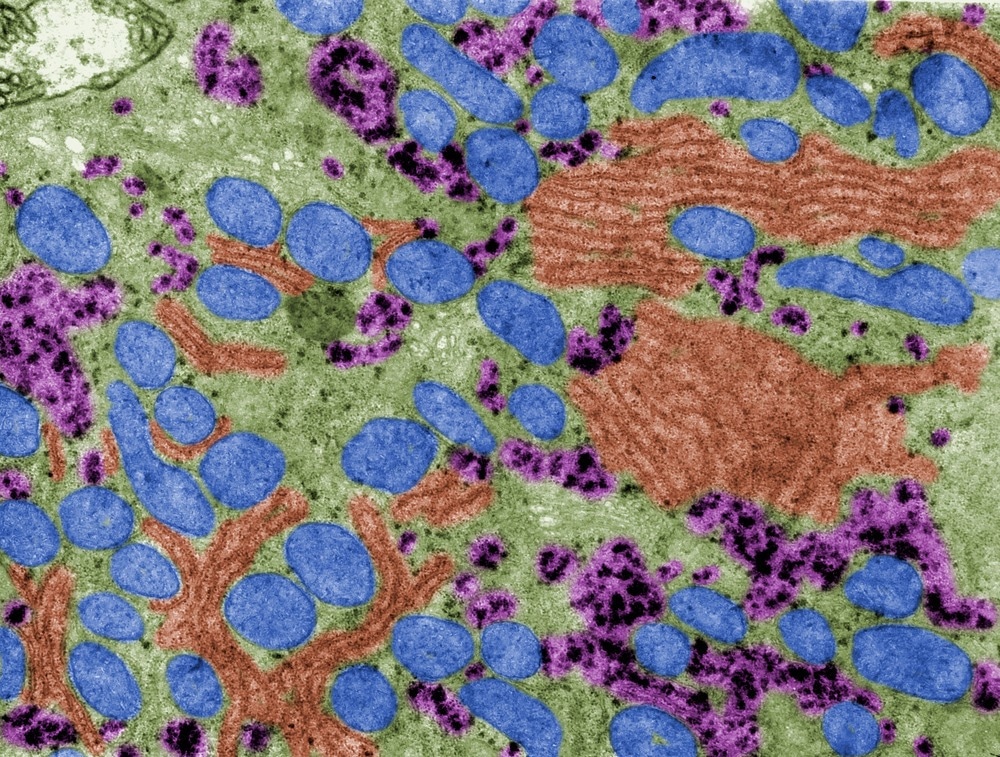Nanopore-based techniques have a broad range of applications and are used extensively in industrial and academic research.
 Study: TEM based applications in solid state nanopores: From fabrication to liquid in-situ bio-imaging. Image Credit: Jose Luis Calvo/Shutterstock.com
Study: TEM based applications in solid state nanopores: From fabrication to liquid in-situ bio-imaging. Image Credit: Jose Luis Calvo/Shutterstock.com
Despite the commercialization of biological nanopore-based sequencing methods, the solid-state nanopore is preferable due to its mechanical and chemical stability, size tunability, and ease of integration into measurement electronics.
However, a quick, cost-effective, and easy solid-state nanopore fabrication method with large-scale production is unavailable, limiting its practical applicability. Transmission electron microscope (TEM) based fabrication is a frequently used nanopore fabrication technique in laboratory-level research due to its ability to image and fabricate nanopores in parallel.
The review article published in the journal Micron focused on various aspects of nanopore technology based on TEM. Hybrid nanopores, prepared by DNA origami integration into solid-state nanopores, were highlighted as hybrid particles leveraging the benefits of biological and solid-state nanopores.
Nanopore Technology
Nanopore technology involves nano-scale holes embedded in a thin membrane structure to detect the potential change when charged biological molecules smaller than nanopore pass through the hole. Therefore, nanopore technology has the potential to sense and analyze single-molecule amino acids, DNA, RNA, and many more.
DNA sequencing methods based on nanopores are new techniques, providing a low-cost and portable method without the requirement for DNA amplification or restrictions on the length of the DNA to be sequenced.
The present article focused on nanopore-based devices with nanometer-scale pores fabricated on a thin membrane that separates the two chambers filled with electrolytes. Voltage application between the two chambers permits the passage of molecules and ions between the chambers.
In the nanopore-based technique, when a molecule is forced to pass through the nanopore, a certain volume of electrolyte present in the pore is displaced, changing the electrical impedance. This change in current is recorded for molecular characterization of the analyte in terms of conformation, structural, and chemical properties.
Solid-state, biological and hybrid nanopores are three broad classes of nanopore techniques. While biological nanopores are inflexible towards tuning the shape and pore size, and lack mechanical and chemical stability, solid-state nanopores resolve these issues by increasing the electrical, chemical, and mechanical stabilities.
Increasing the signal-to-noise detection ratio by creating pores whose diameters and thickness are comparable to an analyte is a primary challenge in nanopore technology. Although several reports described the fabrication of solid-state nanopores via TEM, only a few authors reported the exact parameters for fabricating. Thus, the lack of related antecedents is another challenge in developing the field of nanopore technology.
TEM Towards Nanopore Fabrication
TEM is an excellent tool for the fabrication of nanopores on thin solid membranes. It facilitates the processes of fabrication, imaging, and pore geometry control and uses electron beams in the drilling and imaging of nanopores.
Here, the electron beam has dual functions; to close undesirable secondary pores formed during drilling and to visualize the real-time dynamics of nanopore fabrication. Thus, TEM is recognized as an advanced method than other conventional imaging techniques.
Although TEM was utilized to drill nanopores on various two-dimensional (2D) materials, this technique of nanopore fabrication comes with a few drawbacks. For example, there are sample size and geometric restrictions when fitting into the TEM sample holder and membrane damage due to the formation of pinholes. Thus, the viability of TEM for mass production of nanopores is still a primary concern.
Imaging of Nanopores Utilizing TEM
The shape and geometry of a nanopore contribute toward molecular detection, and three-dimensional (3D) imaging of nanopore helps understand the pore geometry-detection sensitivity relation, which is possible by utilizing the energy filtering TEM (EFTEM), electron energy loss spectroscopy (EELS), or Electron Tomography.
On the other hand, utilizing many TEM images with multiple angles can help reconstruct the image in 3D with good resolution. Here, the alignment of the images is performed using the cross-correlation technique. This 3D reconstruction is termed “TEM images and Tomography”.
Besides TEM imaging in the solid state, placing an entire fluid cell inside TEM can help capture in situ changes in pore structure and visualize an analyte’s (like protein/DNA) translocation dynamics through the pore, making nanopore operando imaging a reality.
Scope for Future Work
In nanopore technology, the translocation dynamics or an analyte position is known only after its translocation through the pore, creating a current blockade. No methods have been developed to date that facilitated the visualization of an analyte’s pre-and post-translocation dynamics in the nanopore.
This type of visualization could be possible by combining solid-state nanopore technology with liquid TEM and has many advantages. For example, it allows the direct prediction of the conformation of a protein while passing through the nanopore.
Additionally, the configuration of the nanopore into flow cell TEM was proposed as a scope to enable the real-time observation of pore formation and translocation dynamics of molecules through the nanopore in a liquid environment.
Reference
Sajeer, P. M., Nukala, P., Varma, M. (2022). TEM based applications in solid state nanopores: from fabrication to liquid in-situ bio-imaging. Micron, 162, 103347. https://www.sciencedirect.com/science/article/pii/S0968432822001433?via%3Dihub
Disclaimer: The views expressed here are those of the author expressed in their private capacity and do not necessarily represent the views of AZoM.com Limited T/A AZoNetwork the owner and operator of this website. This disclaimer forms part of the Terms and conditions of use of this website.